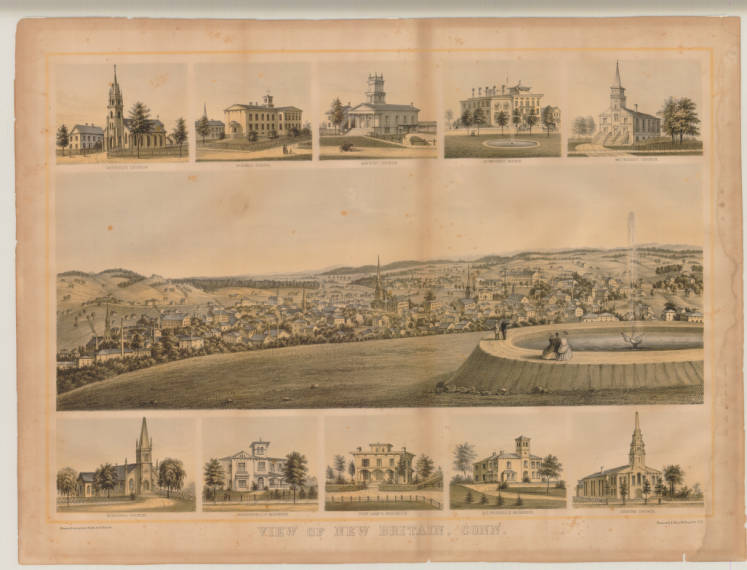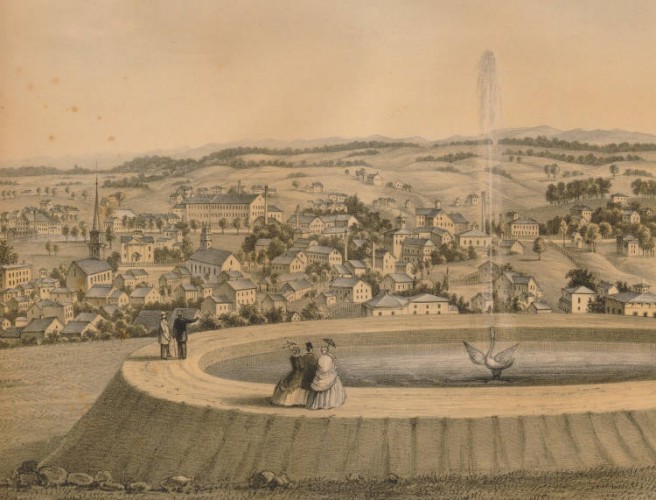By Kate Steinway
The industrial revolution transformed Connecticut’s landscape during the Victorian-era as factories multiplied across the state. As business thrived, the factories attracted immigrant laborers, stimulated investment in civic infrastructure, and contributed to less desirable changes, such as increased pollution and overcrowding. Growing cities and towns, eager to express their civic pride, embraced a novel art form commonly known as a bird’s-eye view. These detailed town portraits, drawn as though the artist had viewed the town from a high perch, allowed Americans in the late 1800s to celebrate—and become accustomed to—their rapidly changing environments.

H. Knecht, View of New Britain, Conn. NY: Jacob Rau, ca. 1862-68 – Connecticut Historical Society and Connecticut History Online
In this bird’s-eye view of New Britain, Walnut Hill Park and Reservoir dominates the foreground. As such, the print can be seen as a celebration of this recent addition to the city. In 1856, a few years prior to the lithograph’s production, a group of 10 men purchased the hill for the purpose of constructing a reservoir and park for the community. The hill had been a pasture land, which accounts for its barren appearance in the print. (In 1870, New Britain would contract Olmsted, Vaux & Company to develop a master design plan for the park, and lush plantings, walkways, drinking fountains, and other amenities would be added overtime.) The conversion of this land was part of a growing public parks movement in the late 1800s that was inaugurated with the creation of Bushnell Park in Hartford and Central Park in New York City.
Numerous factories and businesses had developed in the center of New Britain along Main Street, and the park offered citizens a peaceful respite from crowds and noise. As urban theorists abandoned the idea that manufacturing could exist in harmony with the countryside, the parks movement developed to bring a piece of the country into the city.
This scene invited those beholding it to identify with the well-dressed citizens shown admiring the new park, above and away from the busy city center below. The 10 vignettes accompanying the central image of the park also diminish the industrial and commercial atmosphere of New Britain by illustrating private residences, churches, and the New Britain Normal School (the predecessor of Central Connecticut State University).
Kate Steinway, Executive Director of the Connecticut Historical Society (CHS) in Hartford, curated the traveling exhibition, Hamlets & Hubs; Bird’s-Eye Views of Connecticut Towns, 1849-1908 (1987-88), from which this article is derived, while Curator of Prints and Photographs at CHS.








